Content
- Trauma classification
- Sharp break
- Subacute
- Traumatic
- Degenerative
- Stages and degrees
- Initial
- Progressive
- Launched
- Symptoms and Signs
- Causes
- Diagnostics
- Treatment methods
- Medications
- Folk remedies
- Surgical intervention
- Physiotherapy
- Potential consequences and complications
- Meniscus tear video
Meniscus tear is a common knee joint disease, in which damage to the ligaments and other parts of the articular joint occurs, accompanied by severe pain in the affected area and other complications from the musculoskeletal system.
Symptoms usually appear suddenly after an injury, disrupt the patient's usual lifestyle, and may cause immobility. Clinical manifestations in different patients may differ depending on the severity of the condition.
Trauma classification
The pathological condition can proceed in different forms, but experts distinguish several varieties that differ in the characteristics of the course, symptoms and the presence of a risk of complications. Menisci are cartilage plates that sit between the heads of the bones. It is when these plates are damaged that the symptoms of pathology arise.
Sharp break
An acute condition is called when the symptoms significantly worsen the patient's condition, provoke complications. Patients report severe pain, impossibility of movement, and some other manifestations.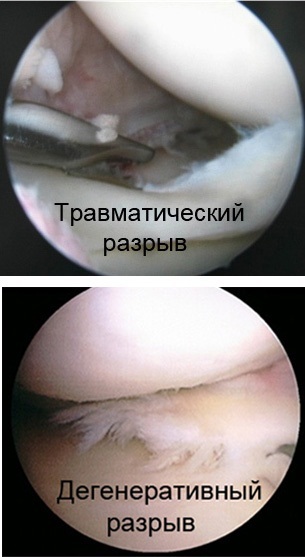
The acute form of the disorder is considered to be quite common among patients, especially in professional athletes.
Subacute
Rupture of the meniscus of the knee joint (symptoms of the disorder can significantly worsen the patient's condition) in a subacute form is common. This condition is less likely to result in complete loss of mobility, but it is also accompanied by severe pain. Treatment of the disease is somewhat simpler than when an acute form is detected.
Traumatic
The traumatic form of the pathological condition is considered the most common. It develops as a result of injury to the knee joint.
The condition can be acute, accompanied not only by pain, but also by concomitant systemic manifestations.
Degenerative
In the degenerative type of lesion, rupture occurs as a result of a long course of degenerative-dystrophic disease. It leads to a gradual thinning of the meniscus.
As a result, a rupture of the plates occurs, provoking a disruption in the functioning of the articular joint and the entire musculoskeletal system.
Stages and degrees
The pathological condition usually proceeds in several stages, each of which is accompanied by different clinical manifestations.
Initial
At this stage, the first acute or subacute symptoms of the disease appear in patients, but the general condition is slightly disturbed.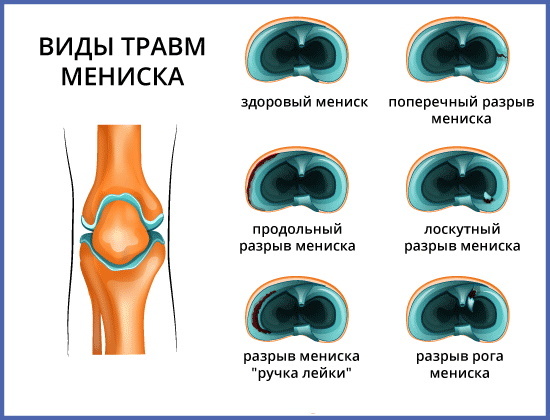
Patients do not have systemic disorders that can aggravate well-being and provoke complications. In some cases, patients do not visit a doctor, they use any medications at home to improve their condition.
Progressive
At a progressive stage, the symptomatology manifests itself in an acute form, gradually worsens and leads to systemic disorders.
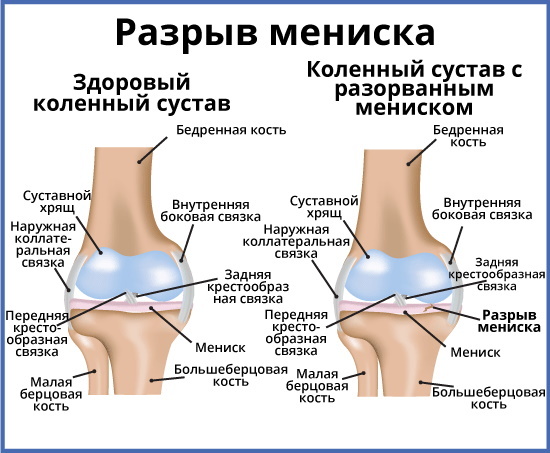
The pain at this stage becomes unbearable, so the patient turns to a specialist who prescribes the appropriate treatment.
Launched
Rupture of the meniscus of the knee joint (symptoms of the disorder do not always lead to loss of mobility) in a neglected form is observed in the absence of treatment at the initial and progressive stage.
The patient's condition is very serious, there are signs of inflammation, complications from the soft tissues. At this stage, the treatment is complex and lengthy, often the joint mobility is completely lost.
Symptoms and Signs
The pathological condition is accompanied by various symptoms that affect not only the affected limb, but also the work of internal organs. Among the external signs, one can distinguish swelling in the affected area, the appearance of a hematoma, and deformation of the articular joint. Depending on the cause of the rupture and the presence of concomitant abnormalities in the patient, external symptoms may differ.
Other manifestations of pathology worsen the patient's condition:
- Pain in the affected area that increases with movement. The severity of pain depends on the degree of tissue damage. With a complete rupture, the symptomatology manifests itself in an acute form, which worsens the general condition.
- An increase in body temperature is observed when the inflammatory process joins. Some talk about a slight increase in indicators, others note a prolonged fever.
- The spread of edema to soft tissues located in the knee joint area. In this case, the affected limb is visually very different from the healthy one, the edema is visible with the naked eye.
- Sleep disturbance associated with severe pain.
- Weakness, fatigue and decreased performance are common. The patient's mobility is limited, which leads to muscle weakness, disruption of metabolic processes in soft tissues.
- Lack of appetite against the background of severe pain and fever.
- Irritability, drowsiness. Similar symptoms are noted with prolonged persistence of pain, as well as the absence of treatment after injury.
Quite often, the patient develops signs of purulent inflammation when the pathological process lasts for a long time. As a result, systemic disorders are aggravated, possibly the addition of abnormalities from the heart and nervous system.
Causes
Meniscus rupture is considered a fairly common pathology of the knee joint, it can occur as a result of various reasons, and the symptoms largely depend on the predisposing factor.
The most common reasons are:
- Stretching of muscles and ligaments in the area of the articular joint. As a result, the stress on the joint increases, which can provoke damage to the meniscus.
- Joint contusion, which is accompanied by damage to other tissues.
- The presence of chronic pathologies of the articular joints in patients. For example, with arthritis, the risk of injury increases significantly.
- Acute bursitis. Pathology is an inflammation of the joint capsule, provoking a lesion of the meniscus, followed by its rupture with minimal stress.
- Diagnosing gout. With this disease, deformation of the articular joint occurs, which significantly increases the risk of rupture of the meniscus under stress.
- Degenerative-dystrophic changes in the articular joints, in which there is a gradual destruction of cartilage tissue.
- Professional activity, accompanied by increased stress on the articular joints. In this case, the load on the menisci increases, accompanying deviations develop.
- Fracture of the bones of the lower extremities. This injury is often accompanied by damage to the meniscus.
- Congenital pathologies of the development of the articular joint, in which careless movements can provoke a meniscus rupture.
Excess weight increases the risk of injury, which is associated with increased stress on the joint. Even minor injuries can provoke pathology.
Diagnostics
The appearance of symptoms of the disease is considered a reason for an immediate visit to a doctor, who will determine the severity of the symptoms and the optimal method of treatment for a particular patient. Several informative methods are used for diagnosis, since pain may indicate a rupture of ligaments, an articular bag, or other damage.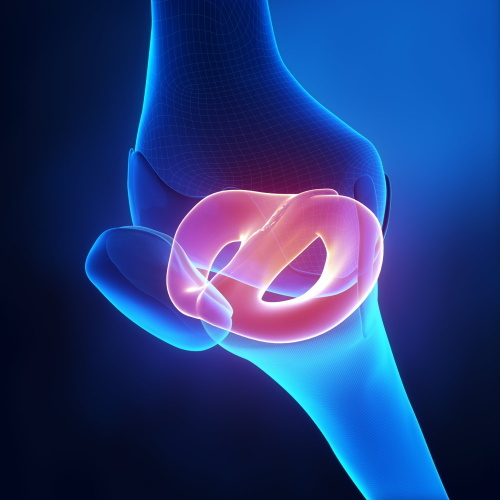
| Method | Peculiarities | Cost and venue |
| General examination and questioning of the patient | The first and important stage of diagnosis, in which the doctor listens to the patient's complaints about the features of pain, as well as the time, circumstances of their occurrence. After that, he examines the affected area, determines by several signs that it is the meniscus that is damaged. | It is carried out in each clinic for free. |
| Blood test | When contacting a doctor, a patient must take blood from a vein to determine general and biochemical parameters. Based on these data, the presence or absence of an inflammatory process, complications from other organs is determined. | It is carried out in government clinics. In private institutions, the cost is approximately 500-600 rubles. |
| Joint ultrasound | Diagnostics is carried out often, allows you to assess the condition of the joint capsule and surrounding tissues. The method is informative and effective. | It is carried out in clinics that have the appropriate equipment, the cost is 700-800 rubles. |
| X-ray | An additional and effective diagnostic method, in which the condition of the affected articular joint is assessed using X-rays. | It is usually carried out free of charge in government clinics. |
| MRI | The most informative and effective diagnostic method, in which, with the help of a special device, the tissues of the joint are studied, the degree of severity of the damage is determined. | The method is used in clinics that have equipment. The price is 1500-2500 rubles. |
When diagnosing, the specialist pays special attention to the symptoms accompanying the defeat of the meniscus. For example, Landau's symptom confirms pathology. The patient is asked to sit down and cross his legs bent at the knee joints, that is, sit "in Turkish". When localized pain appears, they talk about the involvement of the meniscus in the process.
Steimann's symptom also confirms the presence of a meniscus lesion, if it is positive. For this, the patient is asked to move the lower leg in a sitting position and with the leg bent at the knee joint. With the appearance of severe pain during movement, they talk about the defeat of the meniscus.
The most informative method is considered to be magnetic resonance imaging. It helps to see the complete picture of damage and assess the condition of the surrounding tissues. But only a comprehensive study allows the doctor to establish an accurate diagnosis.
Treatment methods
A ruptured knee meniscus (symptoms of injury do not always occur after injury) can be treated using a variety of methods. Conservative therapy is usually complemented by other methods that increase efficiency and reduce the risk of complications.
Medications
Treatment with systemic and some local drugs is considered effective in the initial stages of the disease and in the absence of severe complications. Therapy in this case is symptomatic, that is, it is aimed at eliminating one or another manifestation.
The most effective remedies:
-
Diclofenac possesses pronounced analgesic properties, helps to improve the condition quite quickly after injury or rupture for other reasons. The drug relieves inflammation, prevents its spread to large areas of the skin. The duration of the course is 5 days. Every day, the patient is injected with a solution intramuscularly, 3 ml.
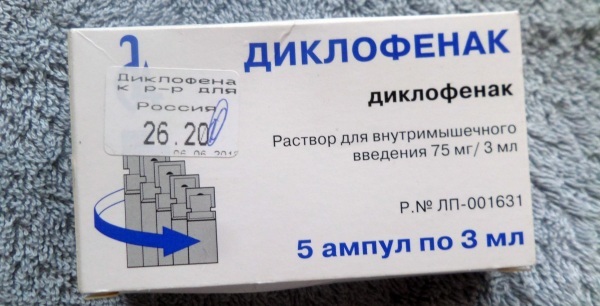
Diclofenac injections. - Ketorol taken orally in the form of tablets, 1 piece 2-3 times a day, depending on the severity of the pain. The drug not only eliminates acute pain, but also prevents the development of the inflammatory process in the affected area. The duration of the course does not exceed 5 days, which is associated with an increased risk of complications from the digestive tract.
- Meloxicam refers to non-hormonal drugs with high efficiency. The drug has anti-inflammatory and analgesic properties, quickly improves the condition, prevents insomnia against the background of severe pain. The solution is injected intramuscularly at 1.5 ml per day, and the duration of the course is 3-5 days.
- Naklofen can be administered intramuscularly at 3 ml per day. The tool also belongs to non-steroidal anti-inflammatory drugs, is effective. The duration of treatment with the solution does not exceed 5 days. Sometimes the daily rate is divided by 2 times, administered in the morning and evening.
- Dexalgin it is allowed to inject intravenously or intramuscularly, 2 ml per day. Before intravenous infusion, it is necessary to dilute in 20 ml of sodium chloride 0.9%. The duration of treatment with the agent is 3-6 days. The drug has pronounced analgesic properties.
- Ibuprofen reduces body temperature if it rises against the background of severe pain and inflammation. Tablets are taken orally 1 piece 2-3 times a day. Usually, it is recommended to take it only when the temperature rises, but the maximum duration of the course for reducing does not exceed 5 days.
- Glucosamine possesses chondroprotective properties, that is, it helps to restore the cartilage tissue of the joint. It is not taken in the acute stage, but after relieving pain and eliminating the symptoms of inflammation, the remedy helps to speed up recovery. The drug is taken in a dosage of 250-500 mg 2-3 times a day. The duration of treatment is adjusted individually, depending on the condition of the articular joint.
- Alflutop refers to chondroprotective agents of natural origin. It is used for mild to moderate damage. The solution is administered intramuscularly, 1 ml per day. The standard course duration is 25-30 days.
- Diprospan refers to a potent combined agent. It is used for 2-4 days to relieve inflammation and severe pain. A single dosage does not exceed 1 ampoule, it is administered 1 time per day. Sometimes it is sufficient to administer 1 dose to obtain a pronounced effect.
Other medications may be prescribed depending on the accompanying symptoms. The therapy regimen and dosage is determined individually for each patient.
Folk remedies
Traditional medicine recipes do not help cure the disease, but in some cases they can alleviate the general condition of the patient and reduce the likelihood of complications. Patients can use tinctures and compresses to relieve swelling.
Propolis tincture has mild analgesic and anti-inflammatory properties. It can be used to rub the affected area 2 times a day. It is easy to prepare the medicine. It is necessary to place 20 g of fresh propolis in a glass container and pour 100 ml of vodka or alcohol. The product should be infused for 2 weeks in a dark place. After that, the tincture can be used to rub the affected area. The duration of the course is from 5 to 10 days.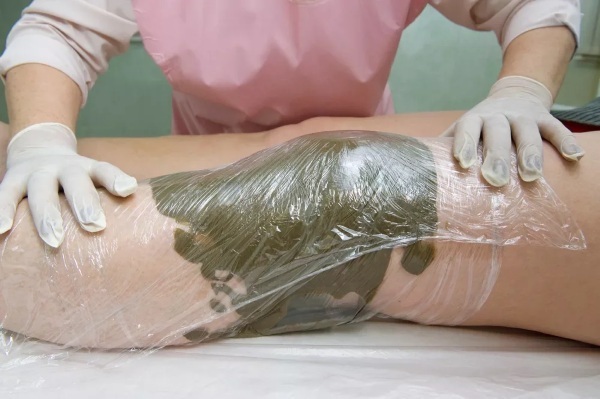
Cabbage leaf compress with honey is also considered to be an effective way to relieve pain and eliminate swelling. It is necessary to take a large cabbage leaf, slightly beat it off until juice appears, distribute a small amount of honey and apply to the affected joint overnight. It is necessary to repeat the manipulations for 7-10 days in a row.
Do not expect a quick and pronounced effect from using home remedies. In most cases, they relieve symptoms somewhat, but do not help speed up recovery. Any remedy has its own contraindications and can provoke negative reactions.
Surgical intervention
Rupture of the knee meniscus (symptoms of pathology can limit the patient's mobility) is treated operatively in the case when other methods do not bring a pronounced result, and the pathology provokes complications.
Depending on the cause of the lesion, the degree of its severity, various methods of surgical intervention can be used:
- Partial or complete removal of the meniscus is necessary in case of severe damage and inability to restore tissue. Today, such an intervention is rarely performed, since it is very traumatic, and the success rate of the operation does not exceed 65%. The manipulation is carried out under anesthesia, followed by a long period of rehabilitation and complications often develop.
- The restoration of the affected meniscus is carried out more often, it is considered less traumatic and helps to preserve the function of the joint after rehabilitation of the patient. Usually, the intervention is carried out in young patients. For the operation, special retainers are selected, so tissue damage is minimal. The recovery period after such an intervention is short; in most cases, the technique does not lead to serious complications.
- Replacing the meniscus with an implant is necessary if tissue restoration is impossible. The method is rather complicated and expensive, it involves the complete extraction of the affected tissues with their subsequent replacement with an implant. Rehabilitation after manipulation is long, but in case of successful implementation, the mobility in the joint can be fully restored.

In each case, the doctor individually selects the most appropriate method.
Physiotherapy
During the rehabilitation period, patients must undergo a course of physiotherapy to fully restore not only the tissues of the joint, but also the muscles of the limbs.
UHF therapy involves exposure to the affected area with special radiation of varying intensity. For a full course, 10 sessions of 15 minutes will be required, which are carried out at intervals of 2 days.
Electrophoresis also improves tissue health. The procedure involves exposure to the affected area with electrical impulses. Often during the manipulation, painkillers are used, the particles of which, using electric waves, go directly to the inflammation focus. The course consists of 10-15 sessions, 20 minutes each. The procedures are carried out in 2-3 days.
Physical therapy helps restore muscle tone and prevent malnutrition in muscle fibers. The program is made individually for each patient. The specialist takes into account the patient's age, the severity of the pathology. At the initial stage, workouts last no more than 10 minutes, but gradually the duration can be increased in the absence of pain.
Potential consequences and complications
In the absence of therapy, complications always develop.
The most common ones are:
- The development of a severe inflammatory process in the articular joint.
- The spread of inflammation to other tissues, provoking a deterioration in the general condition.
- Systemic disorders that develop against a background of severe pain and inflammation.
- Limitation of joint mobility.
- Complete loss of the ability to flex and extend the limb.
- Atrophy of the tissues of the limb as a result of impaired blood circulation and tissue nutrition.
To prevent complications, it is recommended that when the first symptoms of a violation appear, immediately consult a doctor.
Meniscus tear is considered a fairly common knee disorder. Pathology occurs in patients of different ages, its symptoms can significantly worsen the quality of life. The disease requires the correct complex treatment.
Meniscus tear video
Meniscus tear treatment:
